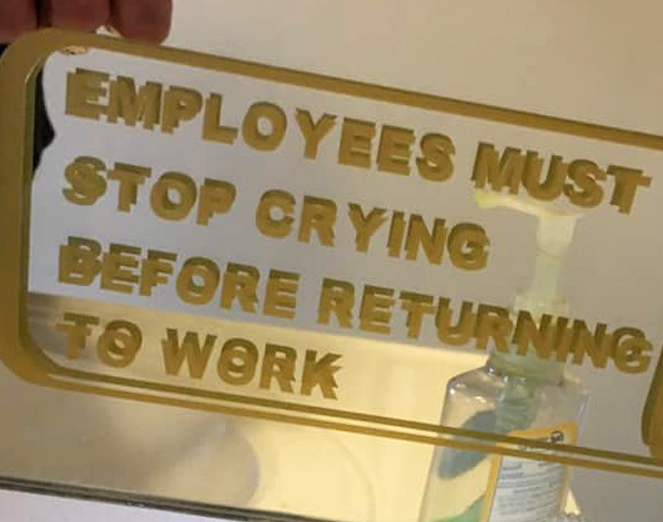Reading comprehension is hard isn’t it
- 0 Posts
- 141 Comments
I directly answered you and provided sources and background.
Maybe try reading on your own without a mentor for granting you reading comprehension
The Nonviolent and Violent Campaigns and Outcomes (NAVCO) Data Project is the world’s leading dataset on the characteristics and outcomes of nonviolent and violent resistance campaigns. The latest version covers 627 mass mobilizations in every country in the world from 1900-2021. The coverage is global but excludes maximalist campaigns (i.e. those seeking to overthrow an incumbent government, expel foreign military occupation, or secede).
Chenoweth and co-author Maria J. Stephan published their first analysis of the comparative outcomes of nonviolent and violent resistance campaigns in the 2011 book Why Civil Resistance Works: The Strategic Logic of Nonviolent Conflict. In this book, the authors aggregated data from 1900–2006 and concluded that, overall, nonviolent civil resistance was more successful in achieving target outcomes than campaigns that use violence. The more recent dataset featured in the interactive tool confirms this trend and extends it into the past decade.
Into the exact same regime with a new color of paint?
This is a really common misunderstanding of how nonviolent movements actually work, and frankly gets the causality backwards.
You’re right that successful movements often have both violent and nonviolent wings - but the nonviolent components don’t succeed because of the violent ones. They succeed despite them. The research is pretty clear on this: nonviolent campaigns are actually more likely to achieve their goals than violent ones, and they’re more likely to lead to stable democratic outcomes.
Nonviolent movements get labeled as extremist precisely when they’re associated with violence, not when they’re separate from it. The Civil Rights Movement’s greatest victories came when they maintained strict nonviolent discipline - Birmingham, Selma, the March on Washington. Every time violence entered the picture, it gave opponents ammunition to dismiss the entire movement.
The “good cop/bad cop” theory sounds intuitive but doesn’t hold up to scrutiny. What actually makes nonviolent resistance effective is mass participation, strategic planning, and moral leverage - not the threat of violence lurking in the background.
History has overwhelmingly shown that non-violence is more successful than violence. You do you.
You have the causality backwards.
You’re right that successful movements often have both violent and nonviolent wings - but the nonviolent components don’t succeed because of the violent ones. They succeed despite them. The research is pretty clear on this: nonviolent campaigns are actually more likely to achieve their goals than violent ones, and they’re more likely to lead to stable democratic outcomes.
Your claim that “without violent resistance, nonviolent resistance becomes branded as terrorists” is historically backwards. Nonviolent movements get labeled as extremist precisely when they’re associated with violence, not when they’re separate from it. The Civil Rights Movement’s greatest victories came when they maintained strict nonviolent discipline - Birmingham, Selma, the March on Washington. Every time violence entered the picture, it gave opponents ammunition to dismiss the entire movement.
And about Gandhi needing violent militants to succeed - this ignores how the independence movement actually worked. The violent revolutionary groups you’re thinking of (like the Hindustan Republican Association) were largely marginalized by the time of Gandhi’s major campaigns. His mass mobilization strategies worked because they were genuinely nonviolent and drew broad participation precisely because people knew they wouldn’t be asked to commit violence.
The “good cop/bad cop” theory sounds intuitive but doesn’t hold up to scrutiny. What actually makes nonviolent resistance effective is mass participation, strategic planning, and moral leverage - not the threat of violence lurking in the background.
Well that sure is an opinion I haven’t heard before
Non-violence is the greatest force at the disposal of mankind. It is mightier than the mightiest weapon of destruction devised by the ingenuity of man.
Except ketamine doesn’t do that to you

 63·2 个月前
63·2 个月前Even with high speed rail you’re looking at 30+ hours from Seattle to NYC. And that’s optimistic, ignoring the numerous alpine mountains. No thanks.

 134·2 个月前
134·2 个月前Ahh yes, trade 6 hours for a 3 day, $400 train ride to NYC.
Lmfao what a shit suggestion

 9·2 个月前
9·2 个月前Scheduled Caste systems. They don’t have a choice.
Turns out they changed the suggestion for that too! Start with blood tests and go from there.
Yes, blood and stool tests are not only just as effective for screening, they are they recommended tests.
No, actually they recommended colorectal screening at 45, which includes blood tests, stool DNA, and stool tests. If those are abnormal, then you go visual.
So basically you don’t need a colonocopy, nor is it recommended, unless something is unusual in the blood/stool or you are high risk.

 35·2 个月前
35·2 个月前… these are waffles.




何?わかりません